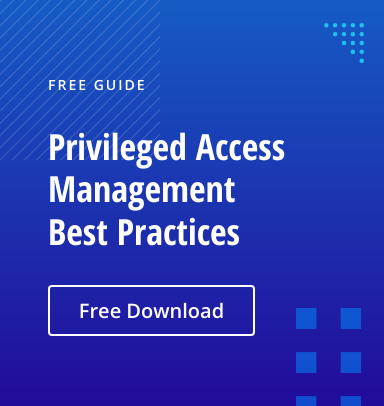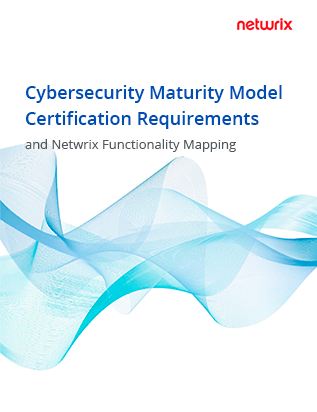Effective identity and access management (IAM) is crucial to both data security and regulatory compliance. Closely governing identities and their access rights is vital to ensuring that each individual has access to only the business systems, applications and data that they need to perform their roles. IAM reduces the risk of accidental data exposure or deletion by account owners, while also limiting the damage that could be done by a malicious actor who compromises a user account. Adhering to identity and access management standards further enhances these security measures.
Achieving effective IAM was a far simpler task when most users accessed company resources only when working on premises. Today, organizations rely on data and applications distributed across multiple cloud environments, IoT devices and AI systems — which makes managing identities and user access privileges far more complex.
Because of its central role in cybersecurity, IAM is also essential to compliance with a wide range of regulations, from sector-specific laws like HIPAA and FERPA to broader data privacy and protection laws such as GDPR. All these regulations require strict control over identities and access rights to protect customer information and other sensitive data. Non-compliance can lead to severe penalties and damage to the organization’s reputation.
This article explores how modern IAM solutions help organizations ensure both security and regulatory compliance.
Core IAM Processes
An easy way to understand how IAM works is to remember the three as:
- Authentication is the process of verifying the identities of users before allowing them to access systems.
- Authorization is the process of controlling what resources an authenticated user can access and what actions they can take with those resources.
- Accounting is the process of tracking user activity for various purposes, including spotting potential threats, passing compliance audits and enabling accurate billing.
IAM and Compliance Regulations
The list of compliance regulations is constantly growing, but here are seven mandates that affect many organizations:
- Sarbanes-Oxley (SOX) mandates stringent financial record-keeping and reporting for US public companies to protect investors from fraudulent activities. Key requirements include robust access controls for all financial systems and data, along with comprehensive audit trails for monitoring and reporting.
- Gramm-Leach-Bliley Act (GLBA) requires financial institutions to protect the confidentiality and integrity of consumer information by implementing data protection measures like access controls, encryption and secure authentication.
- Health Insurance Portability and Accountability Act (HIPAA) requires healthcare providers and their partners to protect patient health information (PHI) from improper access or disclosure. It mandates the implementation of access controls, auditing and authentication measures to protect the privacy and security of PHI.
- Payment Card Industry Data Security Standard (PCI DSS) applies to all companies that process, store or transmit credit card information. It mandates the implementation of strong access controls, regular monitoring and testing of networks, and comprehensive security management practices to protect cardholder data.
- General Data Protection Regulation (GDPR) is an EU law that applies to all organizations that store or process the data of EU residents. It requires them to implement appropriate technical and organizational measures, including access controls and data encryption, to protect that information.
- Family Educational Rights and Privacy Act (FERPA) is a US federal law that protects the privacy of student education records and grants parents and students certain rights regarding those records. Educational institutions must implement access controls to ensure that only authorized individuals can access student records and maintain logs of access.
- NERC Critical Infrastructure Protection (NERC CIP) is designed to protect the physical and cyber security of critical infrastructure in the North American bulk electric system. It requires strict access controls, regular audits and monitoring of access to critical infrastructure systems to protect against cyber threats.
Challenges in IAM Compliance
Achieving and maintaining identity and access management compliance is challenging today on multiple fronts. The biggest hurdle is the sheer complexity of today’s hybrid IT infrastructures, which include a wide variety of on-premises systems, cloud services, mobile devices and electronic data repositories. Increasing adoption of cloud technologies expands the attack surface and hinders visibility, including the ability to identify and protect regulated data as required for compliance.
In addition, the need to integrate with legacy systems that were never designed for modern IAM solutions makes it difficult to implement IAM policies and access controls consistently across your entire environment. Finally, organizations are constantly growing and changing, with users, applications and devices constantly being added while others are being removed, so it can be a struggle to maintain accurate provisioning to meet compliance requirements.
Prioritization is Critical to IAM Success
While the task of securing everyone and everything may seem daunting, it is important to apply the Pareto principle into your cybersecurity mindset. This principle, also known as the 80/20 rule, states that roughly 80% of consequences come from 20% of causes. It applies to identity governance and access management across multiple areas, including:
- User accounts — A small percentage of users (e.g., 20%) hold a disproportionately large number of access privileges (e.g., 80%).
- Applications — A small subset of applications poses the highest risk due to their sensitivity, criticality, or the number of users with access.
- Admin accounts — A small percentage of privileged accounts are typically responsible for a majority of high-risk activities within an organization.
Accordingly, effective cybersecurity revolves around prioritization and focus: streamlining identity and access management for the relatively few areas that represent most risk. By concentrating your IAM efforts on the critical 20% of users, applications and privileged accounts, you can mitigate a substantial portion of your organization’s overall access risk exposure. This risk-based approach allows for efficient use of resources, faster risk mitigation, improved security and better compliance.
Automation in IAM Compliance
Many regulations, such as HIPAA, PCI-DSS and GDPR, mandate specific deadlines for revoking access rights when an employee’s status changes, or they leave the organization. This is an example of where automation comes into play. By automating the user deprovisioning process with identity management solutions, organizations can ensure that access rights are revoked in a timely and consistent manner upon an employee’s departure or role change, reducing the risk of human error. Automated workflows can trigger the necessary actions, such as disabling the user account, revoking access privileges, and removing the user from relevant groups or systems, based on predefined rules and policies.
Other ways that IAM automation can help with compliance include the following:
- Threat detection and response — Automated systems can baseline user access patterns and monitor user activity for suspicious deviations, enabling security teams to respond in time to shut down threats before they result in compliance violations. Some solutions can even offer automated response actions to immediately terminate risky sessions, disable the accounts involved and so on.
- Logging — Automatically logging all access requests, approvals and changes provides a clear and detailed audit trail that is essential for demonstrating compliance with regulatory requirements.
- Reporting — Automated tools can provide detailed reports to facilitate compliance audits, as well as regular reviews to ensure that all IAM practices adhere to the latest regulations and standards.
More broadly, automation makes your IAM tools work for you 24/7 to help ensure consistent enforcement of access policies across all systems and applications. In addition, modern IAM solutions facilitate compliance with other regulatory requirements, such as segregation of duties, which means ensuring that no single individual has excessive control over critical processes to reduce the risk of fraud and mistakes. And they often offer features needed to comply with data protection regulations, including encryption and multifactor authentication (MFA).
IAM Standards and Protocols
To govern identities and access rights, IAM solutions rely on a set of common standards and protocols, including the following:
- OAuth 2.0 is an open standard for authentication that allows third-party applications to obtain limited access to user accounts without exposing passwords. It issues tokens to grant access to resources.
- OpenID Connect (OIDC) is an authentication protocol built on top of OAuth 2.0. It provides a standardized method for applications to verify the identity of users based on authentication performed by an authorization server.
- Security Assertion Markup Language (SAML) is an XML-based standard for exchanging authentication and authorization data between parties, typically an identity provider and a service provider. It enables single sign-on (SSO) capabilities, allowing users to access multiple applications with a single set of credentials
- Kerberos provides strong authentication for client-server applications by using tickets issued by a trusted Key Distribution Center (KDC), thus mitigating the risk of password interception and replay attacks.
- LDAP (Lightweight Directory Access Protocol) LDAP is an open, vendor-neutral protocol for accessing and maintaining distributed directory information services. It plays a crucial role in IAM by providing a central repository for user data and enabling secure authentication and authorization processes.
Specific IAM Solutions for Compliance
Organizations around the world and across various sectors rely on IAM solutions to maintain and prove regulatory compliance. Banks and insurance companies implement them to centralize access management, enforce segregation of duties and provide audit trails to ensure the integrity of financial reporting. Healthcare organizations adopt IAM features like role-based access control (RBAC), MFA and detailed access logging to protect patient data as required by HIPAA. More broadly, organizations that accept payment cards implement IAM solutions for the granular access control, privileged access management (PAM) and continuous monitoring capabilities required to protect cardholder data.
Below are some of the leading IAM solutions to consider.
- Microsoft Entra ID —Microsoft Entra ID is a powerful identity and access management solution that offers single sign-on (SSO), multi-factor authentication (MFA), and conditional access, enhancing security and user convenience. It integrates advanced identity governance tools for access reviews and privileged identity management, ensuring compliance with standards like GDPR, HIPAA, and SOX. Seamlessly integrating with Microsoft 365 and Azure, Entra ID provides comprehensive reporting and logging capabilities to help organizations manage user identities and permissions across cloud infrastructures.
- Netwrix Auditor — Netwrix Auditor enhances IAM compliance with regulations like SOX, HIPAA, GDPR, PCI DSS and GLBA by providing comprehensive visibility, control and reporting across an organization’s IT environment. It tracks user activity, including changes to permissions and access events, to spot threats. Real-time alerts on suspicious activity enable swift response to help maintain compliance and minimize damage. Easy access reviews ensure that permissions are audited and adjusted as needed to maintain the least privilege model required by many mandates. Detailed audit trails and compliance reports facilitate reporting and audits. Plus, Netwrix Auditor integrates with other IAM solutions to provide a unified view of access controls that simplifies compliance management.
- SailPoint IdentityIQ — SailPoint IdentityIQ offers comprehensive access request and certification processes to help ensure accurate provisioning of access rights. It includes policy enforcement and risk management features to detect and mitigate security gaps, supporting compliance with regulations like GDPR, SOX and FERPA. Other features include robust policy management and enforcement, detailed access analytics, risk assessments, and automated user provisioning and deprovisioning. The solution also provides segregation of duties and least privilege access controls.
Conclusion
Modern identity and access management compliance solutions help organizations meet identity and access management standards and regulatory requirements by providing robust controls and monitoring capabilities. IAM solutions enable organizations to effectively manage user identities and control access privileges to ensure that regulated data and sensitive systems are protected from illicit access. Capabilities like continuous monitoring, automated provisioning, and detailed audit trails enable organizations to demonstrate compliance with various regulations, safeguarding their operations and reputation. As the complexity of IT environments continues to evolve, investing in robust IAM solutions becomes increasingly crucial for organizations to navigate the intricate web of compliance requirements and protect their valuable digital assets.



